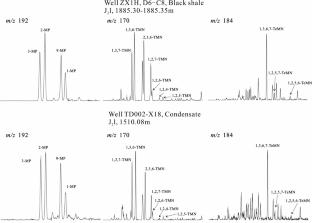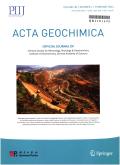Study on natural gas-source correlation and hydrocarbon accumulation of the Lianggaoshan Formation in the east of Sichuan Basin, China
Abstract
Uncertainties about natural gas source and hydrocarbon accumulation seriously restrict oil and gas exploration in the Lianggaoshan Formation (J2l) in the Eastern Sichuan Basin, which has demonstrated great exploration potential in recent years. This study determines the origin of natural gas and the hydrocarbon accumulation model of J2l in the Eastern Sichuan Basin. A new sample pretreatment method named gas purge-microsyringe extraction was employed and confirmed to be a practical and effective method for preparing condensate oil and collecting source rock extract samples. The source rocks of J2l exhibited moderate to good qualities, characterized by high TOC values, dominance of type II1 and II2 kerogens, and high thermal maturities. Biomarker and aromatic characteristics revealed that the source rocks of J2l were deposited in brackish water with weak anoxic conditions. The natural gas in J2l was an organic thermogenic gas generated from the secondary cracking of crude oil, indicating that this natural gas was mainly derived from the source rocks of J2l. The condensate oil-source rock correlation further confirmed the accuracy of the gas-source correlation results. Based on burial, thermal and hydrocarbon-generating histories, two hydrocarbon charging periods (141–133 Ma and 119–112 Ma) and four hydrocarbon accumulation periods of J2l were determined. Combined with structural evolution, depositional histories and reservoir conditions, a simple gas reservoir accumulation model of J2l was developed, which was identified as a “self-generating and self-storing” gas reservoir.


 求助内容:
求助内容: 应助结果提醒方式:
应助结果提醒方式:


